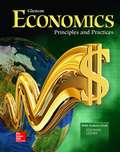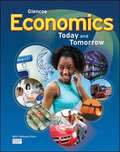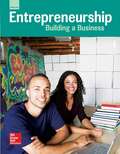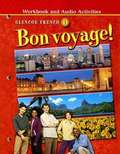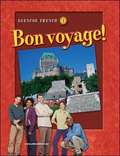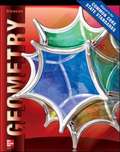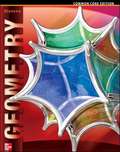- Table View
- List View
Glencoe Economics: Principles & Practices (Texas Edition)
by Gary E. ClaytonThis book is a guide for students and parents of Texas containing unit lessons of Fundamental Economic Concepts, Microeconomics, Macroeconomics: Institutions, Macroeconomics: Policies, International and Global Economics.
Glencoe Economics: Today and Tomorrow
by Roger Leroy MillerEconomics: Today and Tomorrow incorporates the 21 Basic Concepts established in "A Framework for Teaching the Basic Concepts," published by the National Council on Economic Education.
Glencoe El español para nosotros, Curso para hispanohablantes, Nivel 1
by Conrad J. SchmittNIMAC-sourced textbook
Glencoe Entrepreneurship: Building a Business
by Earl C. Meyer Kathleen AllenNIMAC-sourced textbook
Glencoe Exploring the Earth (iScience)
by Glencoe Mcgraw-HillExplore the Earth with this book and learn about mapping, earth's structures, earth's interior, minerals, rocks, weathering, soil, erosion and much much more.
Glencoe Exploring the Universe (iScience)
by Glencoe Mcgraw-HillThis textbook has a very good introduction to the science world.
Glencoe Food For Today
by McGraw-Hill Education StaffFood for Today provides students with the information and skills they need to make safe and healthful food decisions, plan and prepare meals safely, and appreciate the diversity of foods. It emphasizes the basics of nutrition, consumer skills, food science principles, and lab-based food preparation techniques.
Glencoe Food, Nutrition, and Wellness
by Roberta Larson DuyffMcGraw-Hill Education's Food, Nutrition & Wellness teaches students the skills they need to make healthful food choices, prepare nutritious meals, and bring physical activity and wellness practices into their daily lives. The text focuses on the wellness of mind and body, food and kitchen safety, and the qualities, varieties, and combinations of foods. Includes print Student Edition.
Glencoe French 1 Bon Voyage! Workbook and Audio Activities
by Conrad J. Schmitt Katia Brillié LutzProvides additional written practice and guides students through the activities on the Audio CDs.
Glencoe French 1 Bon Voyage! Workbook and Audio Activities
by Conrad J. Schmitt Katia Brillié LutzProvides additional written practice and guides students through the activities on the Audio CDs.
Glencoe French 1: Bon Voyage!
by Conrad J. Schmitt Katia Brillié LutzBon voyage!Clearly the best choice!Bon voyage!(Schmitt and Brillié Lutz) is a comprehensive program that encourages meaningful, practical communication by immersing your students in the language and culture of the Francophone world. The text and its complementary resources help you meet the needs of every student in your diverse classroom.Bon voyage!provides your itinerary for success with exposure to the Francophone culture; clear expectations and goals; thematic, contextualized vocabulary; useful and thematically-linked structure; progressive practice; real-life conversation; cultural readings in the target language; recycling and review; and exquisite National Geographic Society panoramas of the Francophone world.
Glencoe Geologic Changes (iScience)
by Glencoe Mcgraw-HillGreat introduction to geological science for all ages.
Glencoe Geometry (Virginia Edition)
by Dinah Zike Viken Hovsepian Jerry CumminsA Geometry book set according to Virginia educational standards.
Glencoe Geometry Student Common Core Edition
by MacMillan/McGraw-Hill StaffThe mission of the Common Core State Standards is to provide a consistent, clear understanding of what you are expected to learn, so teachers and parents know what they need to do to help you. The standards are designed to be robust and relevant to the real world, reflecting the knowledge and skills needed for success in college and careers.
Glencoe Geometry, Common Core Edition
by Gilbert J. Cuevas Roger Day John A. CarterNIMAC-sourced textbook
Glencoe Georgia Math Grade 7 Volume 2
by Mcgraw-Hill EducationThis edition covers the following units: Unit 3: Ratios and Proportional Relationships Unit 4: Inferences Unit 5: Geometry Unit 6: Probability

